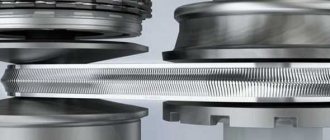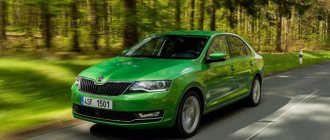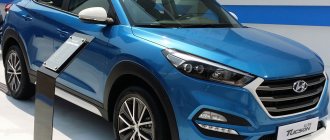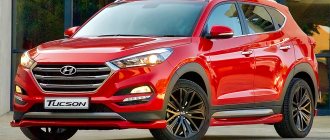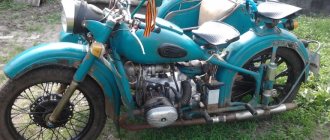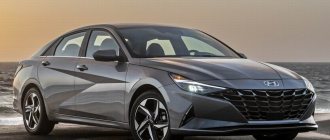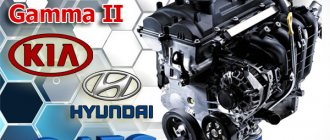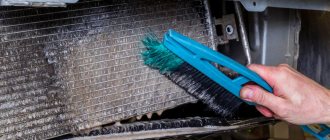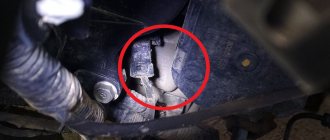Studying in detail the numerous proposals of automakers, sometimes you notice that different concerns are releasing similar projects for sale, and in this case you are at a loss as to which one is better? The question is not easy, especially when there are not so many differences, and in order to give a competent answer to it, it is necessary to conduct a thorough analysis of identical models.
Let's try to identify the leader between two projects of Korean concerns: Kia Ceed and Hyundai i30. Both cars came out at almost the same time, have a very similar appearance and technical equipment and are equally popular both in their homeland and throughout the world. So, who is stronger, Kia Sid or Hyundai i30?
Story
Kia Sid is a famous Korean car, which according to European standards is classified as a C-segment, appeared on the world market in 2006. It was first presented at the Paris auto show, and company representatives immediately stated that the car was developed specifically for Europe.
By May 2006, more than 200,000 copies of the model had been produced. The car was in good demand, but most car enthusiasts were not delighted with the high cost of the Sid. By the way, in 2009 the model underwent restyling.
In 2012, mass production of the second generation LED began, which, by the way, was eventually recognized as one of the safest in the segment.
The Hyundai i30 is a popular Korean compact car that is based on the same modular platform as its current counterpart. The model debuted at the Geneva Motor Show. Initially, the car was assembled at a recently opened plant in Nošovice, Czech Republic; later production processes were partially moved to China. By the way, from a safety point of view, the debut version of the i30 was seriously inferior to the Kia Sid.
In 2011, at the Frankfurt Motor Show, the long-awaited premiere of the second generation i30 took place, which immediately became one of the best-selling models on the European market.
Hyundai i30 or Kia Ceed – which is better? Since neither car has yet achieved any significant awards, at this point the most logical result would be a draw.
"Thirty" in BMW style
The advantages of KIA are obvious. But if you compare it with its competitor, who will emerge victorious in the duel between Hyundai i30 and KIA Ceed? We have already said above that in fact our rivals are twins. And so it is. Therefore, we will deliberately not list the technical characteristics of the Hyundai i30 - they largely duplicate the qualities of Sid.
But if you dig deeper, you cannot help but notice a certain similarity between Hyundai and BMW. There are weakly perceptible corresponding features. They don’t change the weather, but they give “Ayu” charm and style. Therefore, the exterior, perhaps, is still more fashionable in Hyundai. But the interior after the “upgrade” is more advantageous than that of the “Russian Korean”.
Let us also note this: there is a comfortable sofa in the back and, in general, there is more space in the Hyundai. But the luggage compartment is more capacious in Sid.
Appearance
Purely visually, externally, both cars have a lot of common features. But, in terms of style, they are made differently. In Sid’s exterior one can see dynamism and purposefulness, which combine perfectly with Asian laconicism and minimalism. The i30 has a rather practical appearance, even more laconic than its counterpart, but at the same time noticeably more aggressive.
Now everything is in order. The design and layout of the windshield, as well as the hood, are almost the same for both models, which cannot be said about the elements of the bow. While the SID has a compact radiator grille and stylish elongated headlights, the i30 is equipped with a huge false radiator grille and axe-shaped LED headlights.
The lower part of the bumper on both cars is also noticeably different. In the Sid, you can see a trapezoidal air intake and huge fog lights, which contrasts greatly with the very narrow air intake of the i30 and the same fog lights.
From the side, the cars are similar, but the i30 has a more prominent profile part, and the wheel arches are more voluminous compared to its opponent. From behind, with the exception of some nuances, the cars are also very similar.
Considering many common points in the exterior of cars, we will award it a draw here.
Ford Focus
At one time, Ford became the first foreign passenger car, full-scale production of which was launched at a Russian plant built in an open field near St. Petersburg.
The current Focus belongs to the third generation of the model, which, moreover, was thoroughly updated not so long ago. We had in our hands the most sophisticated (and, of course, the most expensive) version with a 1.5-liter turbo engine, an automatic transmission and the maximum that could be selected in the configurator. In terms of equipment, Ford really turned out to be the best. The driver's seat is electrically adjustable; in addition to the heated steering wheel and seats, there is also a heated windshield; and in addition to a rear view camera and all-round parking sensors, the Focus is equipped with a blind spot monitoring system. It is more than appropriate here: the exterior mirrors are small, and a fair portion of the reflective surface is in the spherical sector, which is absolutely useless. Visibility could have been better if not for the swollen A-pillars.
There are no problems with ergonomics in the Ford: taking a comfortable driving position is a couple of trifles. The instruments are excellent, and the on-board computer display is absolutely the best - both in terms of graphics and performance. I liked that on one of the tabs the screen is divided into four parts, displaying all the most valuable information at the same time. The same can be said about the SYNC multimedia system: the best interface, the widest capabilities - it’s hard to find fault with anything.
Valentin Zimin
manager, driving experience – 10 years, car – Mazda3
After restyling, the Focus began to somewhat resemble Aston Martin, and such a comparison is only in favor of Ford. And it drives like a supercar – at least that’s what it might seem like compared to its frankly leisurely competitors. However, the joy comes not only from acceleration, but also from the car’s handling: the Focus steers excellently! At the same time, the smoothness of the ride turned out to be unexpectedly decent: Ford managed to configure the chassis so that comfort did not conflict with driving pleasure. The interior design is clearly made with pretentiousness, but there are no complaints about the quality of execution. The back row may seem cramped to some, but I don’t see a problem here: I rarely have to drive a car with a full load.
Igor Litvinov
private entrepreneur, driving experience – 21 years, car – Ford Focus
Despite the frivolous working volume - only one and a half liters! – the new “turbofocus” drives much more fun than my car with a two-liter engine of similar power. The acceleration dynamics are pleasing, as is the performance of the gearbox, which makes no sense even to switch to sport mode. In general, it seemed to me that the Ford is aimed at an active driver, since it too clearly provokes aggressive driving: it has a low driving position and an elastic suspension. But in terms of visibility, the Focus is inferior to other cars. True, to some extent it compensates for this shortcoming with a blind spot monitoring system, which works perfectly. And it’s easy to maneuver in a yard full of cars: it has the best rear view camera. The interior is slightly worse than that of the Kia, but in terms of the totality of its qualities, I would put the Ford in first place.
In general, the interior of the car makes a surprisingly pleasant impression – both in design and materials. What captivates me most is the attention to detail. For example, there are two sets of USB inputs and 12-volt sockets - one set on the center console plus another in the armrest. By the way, there was also a slot for an SD card.
It could seem,
that the Focus dashboard is the most show-off - and this is true. However, its information content is actually impeccable, and the on-board computer with a high-contrast high-resolution display is absolutely the best in the quartet
Depending on the engine
"Focus" can be equipped with various automatic transmissions: a preselective PowerShift robot or a hydromechanical unit
From the passengers' point of view,
“Focus” is not without sin: the lack of distance between the chairs and the sofa is clearly felt if people of taller than average height are sitting in front
If you don't use the services
interior for storing luggage, then the Ford is not much different from its competitors.
However, it is inferior to everyone in its maximum cargo capabilities. However, the greatest joy was caused by the highly competent cup holder on the central tunnel, which has wide transformation capabilities: sliding partitions allow you to securely fix various containers, and the double bottom makes it possible to place even a one and a half liter bottle.
|
|
However, from the point of view of rear passengers, the Ford is not the best option.
Sitting on the sofa is complicated by the protruding wheel arch, and the door opening itself is quite low. There is practically no room for legs, and if citizens of taller than average height are sitting in front, then it will be frankly cramped in the back. Finally, a third passenger in the second row is extremely undesirable: the sofa is clearly molded for two passengers, and the tunnel on the floor is noticeably higher than in other hatchbacks. The trunk of the Focus is laid out without any special frills, and it’s no different in terms of spaciousness. The underground is inhabited by a “dock”, and the flooring is inconvenient to lift, and besides, it is not supported in any way in the raised position. It’s impossible to secure a bottle of washer, although bags from the supermarket can be hooked onto the hooks – there are four of them, but two of them are located in the wrong places.
However, the Focus more than makes up for all its few shortcomings in its driving habits. A turbo engine coupled with an automatic transmission rewards the car – without embellishment! – excellent dynamics, and the chassis settings maintain an excellent balance between handling and smoothness. And although the Ford handles bumps a little harder than the Kia and Hyundai, this in no way spoils the impression of the car.
The hatchback steers great: the effort on the steering wheel is optimal, the connection with the wheels is pure, roll is minimal. From the point of view of noise insulation, the Focus is not up to par with the Koreans, but listening to the sound of the engine is a special pleasure - when accelerating, the engine is not too loud, but growls in an unusually tasty way.
Salon
When comparing the interiors of both cars, I would like to give preference to the interior of the i30. Why is that? Firstly, Kia designers decided to combine European and Asian traditions in the interior decoration of the car, and, frankly, they did not succeed, but in the i30 everything looks harmonious and appropriate.
Secondly, the i30's interior uses higher quality materials and feels cozier and more spacious.
Safe moment
Let's talk separately about safety. Sid scored five stars in crash testing under the European New Car Assessment Program and became the first Korean to achieve this result. There were some minor questions from experts regarding the consequences of a frontal collision, but overall the protective mechanisms received a high score.
Test drive a KIA Ceed:
“Ai 30” did not get an “A” on the first try. We had to modify the front panel, which could injure the driver’s legs during an impact. By eliminating this risk, Hyundai raised its rating.
By the way, in terms of concern for the safety of pedestrian traffic participants, the authors of the “thirty” showed better results than the Sid developers.
Specifications
To compare the “fillings” of today’s opponents, we chose restyled versions of the 2021 models, the role of power units on which is performed by 1.4-liter gasoline engines. It is worth noting right away that cars are very demanding on the fuel poured into them, so it is advisable to use 95 gasoline. Among other common points, I would like to note the front-wheel drive “trolley” and a six-speed manual transmission.
As for the engines themselves, they produce the same power - 100 horsepower. However, due to the fact that Sid is 68 kg lighter than his opponent, he is more dynamic. For example, to accelerate a car from zero to hundreds you need to spend 12.7 seconds, which is half a second faster than its counterpart. However, in terms of consumption, the situation is almost equal - 6.1 liters versus 6.2 liters, in favor of the i30.
As for the dimensions, there are no special surprises here. The Sid body is only 10 mm longer than its current competitor, but the height of both cars is the same - 1470 mm. The situation is the same with the wheelbase - 2650 mm and ground clearance - 150 mm. Also, each of the cars is equipped with 15-inch wheels.
Choosing between KIA Sid and Hyundai i30
The urban C-class hatchback from KIA, beloved by many car owners, has repeatedly proven its versatility and demand in Russia and Europe. Its direct competitor is a similar brainchild from Hyundai, the i30 model. At first glance, it seems that these cars are absolutely identical. Is it really? What do car owners say who have managed to experience the delights of driving both cars? So, KIA Ceed vs Hyundai i30 - similarities and differences.
Audi A4
• Power, hp. at rpm: 130 at 5700
• Max. speed, km/h: 205
• Acceleration 0–100 km/h, s: 10.4
• Fuel consumption, l/100 km, city/highway/mix. cycle: 10.9/6.2/7.9
Mercedes-Benz C-class 2006, 1.8 automatic transmission
Among the values of the three-pointed star are rear-wheel drive, a small turning radius, a spacious interior, and wide doorways. Equipped with Mercedes-Benz to the highest standard. When purchasing a C-class in the W203 body, it is better to give preference to the car after restyling. Structural improvements have improved directional stability; the car reacts more sharply to steering wheel turns. Thanks to the compressor, the Mercedes starts vigorously.
Platform
Both cars are built on a modern C class platform with independent suspension. The rear axle is built on a multi-link suspension, providing better handling. Engines are offered in the range from 90 to 135 horsepower with distributed fuel injection, ensuring compliance with EURO-4 standards. Both cars have 6-speed transmissions, both manual and automatic. The sporty nature of both cars can be emphasized by the floor-mounted gas pedals, which Sid even has a metal cover on. Despite this, we cannot say that both cars are overly aggressive. The ride is smooth, predictable, and the interior is comfortable in both cars. An additional advantage of Sid is the presence of steering-wheel-mounted gear switches, which can be used if you need to quickly switch to manual gearbox control mode.
In comparing Kia cee'd vs Hyundai i30, I would like to note the softer, one might even say too soft, suspension of Sid. This provides comfort at the highest level, but during waves the stern begins to sway a little, which makes it difficult to accurately enter a turn. In addition, at high speeds when cornering, the front axle can drift. In the event of such a danger, the stabilization system is activated and levels the car. The i30's ride and handling feel is reminiscent of the Cee'd. But its suspension is stiffer, although this has almost no effect on comfort. But handling has improved slightly, this is especially noticeable when entering a turn at high speed.
conclusions
In general, we can conclude that the advantage of the i30 is better handling. But a huge advantage of cee'd remains its rich equipment and saturation with various pleasant “goodies”. At the same time, the prices for the maximum configurations of both cars are almost the same. What should buyers choose – comfort and equipment or slightly better handling, which will be appreciated by fans of high-speed driving, and even then not in all conditions? Surely the question belongs to the category of rhetorical, because the market votes with its wallet, and we see on whose side the majority of votes were.
For greater clarity, we summarize the main technical characteristics of both cars in a comparative table
| Comparable characteristic | Kia cee'd | Hyundai i30 | |
| Body type | 5-door hatchback | ||
| Base | 2 650 mm | ||
| Length | 4 310 mm | 4 300 mm | |
| Height | 1,470 mm | ||
| Width | 1,780 mm | ||
| Ground clearance (ground clearance) | 141 mm | 137 mm | |
| Full mass | 1,850 kg | ||
| Trunk (with folded backrests) | 380 (1,318) l | 378 (1,316) l | |
| Drive unit | front | ||
| Pendants | front | independent McPherson, spring | |
| back | independent multi-link, spring | ||
| Fuel consumption | city | 9.5 l | |
| track | 5.2 l | ||
| mixed | 6.8 l | ||
Let's draw conclusions
As you can see, this is a clear example of how twin cars can hide a lot of surprises and, in reality, turn out to be not as similar as they seem.
And yet, what to choose - Ceed or i30? KIA with a Japanese accent is suitable for young people and for people who expect to get a dose of adrenaline while driving. But Hyundai, having borrowed seriousness from the Germans, awaits connoisseurs of comfort, pedantic and prudent drivers. Also keep in mind that Sid will allow you to save money, while “Ai” may require additional infusions.
Upgrade for KIA
Well, even after the triumphant appearance on the market, the KIAvians did not rest on their laurels and continued to experiment, releasing the Sid in 2010 after restyling.
Dressed up like that
So, what do we most often deal with now? The car can be found in two body styles: hatchback and station wagon. The car is equipped with a 1.6-liter engine that produces 126 “horses”. (Previously the engine was 122 horsepower). Gearbox is a five-speed manual. A four-speed automatic is also available. The car was “dressed up” with a stylish radiator grille, the optical features were corrected, the fog lights were “driven” into rectangles, and the color range was expanded.
Ergonomics: increased degree
The salon now greets passengers with new decoration. Inside, the degree of ergonomics and comfort has increased. The center console has been modified, the steering wheel has become more comfortable and pleasant to the touch.
New Car Sale Discounts on new 2021 and 2019 vehicles. Loan 6.5% and installments 0% www.riaavto.ru More details
Improved dashboard. Even in the standard modification, it has become more stylish and understandable in terms of graphic elements. The orange backlight, which irritates many people, has been replaced with red. In expensive versions, it’s basically space: the dashboard displays complete information about the condition of the car, speed limit, amount of fuel consumed, travel time, etc.
The model is also equipped with two-zone climate control. Many functions in the new Sid have been optimized. For example, to change gear you now only need to press a button.
No more shaking
What else? The designers have improved the suspension. Now KIA passengers are tightly protected from shaking on bumpy roads. Experts have also improved sound insulation. The engine and wheels no longer “dance” on the driver’s ears.
The engineers also “fixed up” several fundamental option innovations. For example, an automated system has appeared that connects wheel slip protection and electric power steering. There is an assistant who will make it easier to start on an uphill slope.
Basic set
Who is stronger in terms of equipment range - Sid or i30? In principle, the modifications of both cars are comparable. The “base” is as follows: ABS, heated seats, modern music, four airbags, standard electronic anti-theft.
There is a difference in the details. For example, the most common “Comfort” from Sid includes air conditioning, and the same Hyundai version boasts climate control. As if in revenge, KIA has ESP.
Test drive a Hyundai i30:
Differences between Kia Ceed and Hyundai i30
The great similarity of models in the first generations gradually disappears over time. From the 3rd generation, individual characteristics and development paths begin to be clearly visible in cars. The main differences between the “Koreans” in question are:
- The obvious sporting emphasis of the i30, which was expressed not just in offering the market a “charged” version, but also in the development of a special body version .
- Compared to the meager variety of Kia Ceed petrol engines, the i30's gamma engines are impressive. There are both petrol and diesel units available to choose from, both naturally aspirated and turbocharged.
- Definitely an unsuccessful proposal from Kia to combine a 1.4 liter paired with a thoughtful robotic transmission in top trim levels. Hyundai trim levels are more diverse and there are no frankly unsuccessful combinations in them.
- In terms of body resistance to corrosion processes, Ceed is significantly superior to its competitor, although it is far from ideal. In particular, both models are partially galvanized , but on the Kia, zinc particles were applied during the steel rolling process, while on the Hyundai, only a zinc-containing coating was applied. With comparable quality of paintwork, differences in galvanization will lead to problems with the i30 body starting much earlier.
- In comparable trim levels, the Kia Ceed is more expensive than its competitor . The minimum price of the model is 1,030 thousand rubles . Prices for Hyundai i30 start at 870 thousand rubles . And this is almost 15% cheaper. It is not correct to consider the “charged” version due to the lack of an analogue from Kia.
Recommendations for choosing between Kia Ceed and Hyundai i30
The bottom line is that the updated generation of the models in question was presented to the market in a very timely manner. The updated design and list of options make the “Koreans” quite competitive. Purchasing any of them will not disappoint a potential buyer.
At the same time, buying a Hyundai i30 looks somewhat preferable, since it can provide a wider selection of engine options at a lower cost. In addition, the model has a wider reach of the consumer audience, including both older people and young people. The Hyundai i30n is aimed precisely at young, ambitious people.
The clear disadvantages of the model include the body's resistance to corrosion . The consequences of the deficiency can be minimized by carrying out a complete anti-corrosion treatment of the body after purchase, as well as by carefully caring for the car during operation. Chips in paintwork require special attention.
Among the recommendations that apply to both cars, it is worth noting the undesirability of purchasing models equipped with robotic gearboxes.
First impression
To make the comparison as objective as possible, we will take cars with maximum configuration. For Hyundai i30 it is Style, for Kia cee'd Premium. Both cars are quite attractive in appearance. Despite the common platform, there are a number of differences that cannot be ignored. For example, as for the side glazing, the side window in front of the front door has a triangular section that is prone to fogging in the cold season. It cannot be said that this nuance greatly affects visibility, but it can cause some discomfort.
The interiors of both cars are made in a modern style and have a pleasant appearance. It's immediately noticeable when the two cars are side by side that the i30's interior has an Asian touch, while the Cee'd shows a certain European restraint. In both cars being compared, the ergonomics are on par and the seating geometry is excellent. The front panel is made of high-quality materials, and the instrument cluster also has an attractive appearance. The ability to customize steering modes is present in both cars, but only the Sid can boast of a heated steering wheel.
A little bit from the Japanese, a little bit from the Germans
However, both cars did not hesitate and borrowed some elements from their sister cars.
Like a bride
So, a “Japanese melody” passed through the KIA. He’s like that bride at a wedding: there’s something foreign about the outfit. A little from Lexus (for example, the design of instruments) and a little from Honda (steering wheel). And the console resembles Nissan manners.
Inspired by other people's successes
“Thirty” “switched over” to the German side. Its creators were apparently inspired by the successes of Volkswagen or Skoda. Here's an example: in the iPhone 30, the backlight is made in blue tones, and the luggage compartment is opened using a logo handle.
"Ay" yes Sid - on the way
It would be great if at least one of our duelists took over the chassis experience from their Japanese-German colleagues. But, alas, so far KIA and Hyundai are not driving so confidently. Especially cars with automatic transmission slow down.
In general, if you look at the battle between the i30 and Ceed on the road, then Sid, of course, shows more drive. After all, it was originally conceived with a sports accent, while “Ai” was made with a calmer audience in mind.
